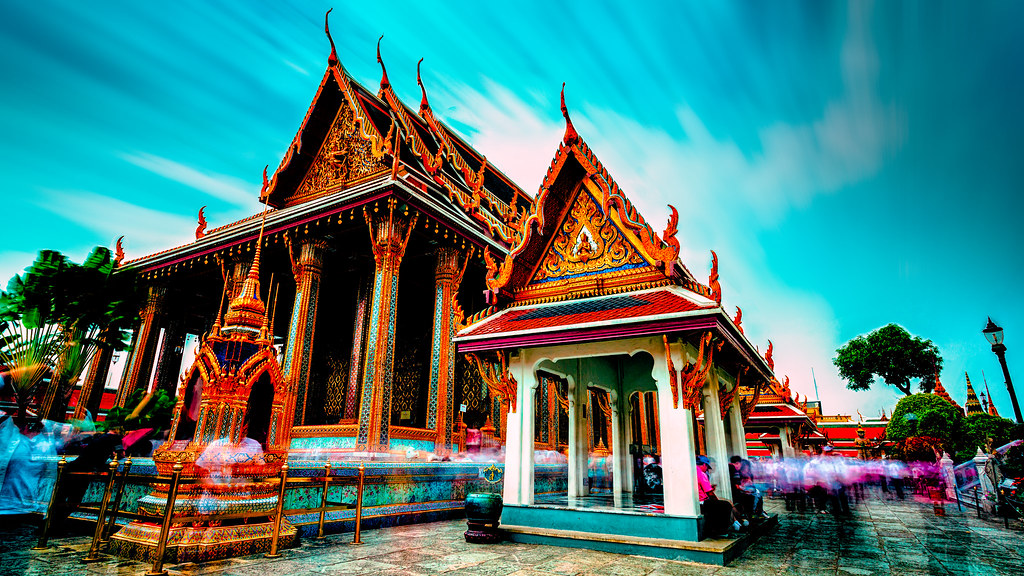 |
| 30" exposure after sunset using no filters |
Whenever I'm out shooting landscapes, I always get asked what types of filters I am using and why I use them. When I was first starting out, the idea of putting pieces of glass in front of my lens didn't make much sense but now my glass feels naked without them there. It will take some time to get used to using filters but it's well worth it. Most things that filters used to do can now be done now in post-production or via exposure bracketing. However, a polarizing effect and long exposure effect can not be accurately reproduced during post so no matter what people tell you, there is still a need for using filters in photography. The graduated neutral density (GND) filter effect can be done in post production and some people don't use them but I like getting the image as close to correct as possible to being correct in camera so I still use the GND when the situation calls for it.
 |
| 30" exposure. notice silhouette of of person on lighthouse |
When choosing what filters to purchase, although there are cheaper options, it is worth getting high quality filters and polarizers or else they will provide a color cast which can't be corrected in post-production. I recommend getting only Lee, Hitech, and B&W filters no matter your skill level, you will be able to notice the difference.
There are a couple options when choosing what type of filter is right for you. There are circular filters that screw onto your lens's threads like the B&W 10 Stop ND Filter and the Variable 2-8 Stop ND Filter which I've heard good things about. These types of filters work well but can cause vignetting in some situations and can be cumbersome to take on and off. They are mainly used by amateurs who are first getting into long exposure photography and while they are great at what they do they aren't as versatile as having a filter holder using square or rectangular filters.
 |
| Adding filters to my foundation kit at a river in Thailand |
 |
| Blurred people and sky at the Grand Palace in Thailand |
Once you have the correct filters, play around with different combinations to find a style of long exposure photography that you like. For example, try stacking a CPL and 10 Stop ND filter and take a mid-day photo at base ISO at the ocean or river. Or use a 3 stop ND, GND, and CPL during sunset which will allow you take a 30 second photo and get a nice motion blur of your subject. The effect in a crowd is also cool, if people are moving they won't show up in your photo. If they stop briefly they may appear semi-transparent or blurred which creates motion in the scene depending on exposure. There is no wrong answer here, think of these filters as a tool once you have more experience, you'll start to get a better feel of situations that will work for long-exposure photography and situations that won't work.
 |
| 180" exposure flattens out waves and blurs clouds |

T(n) = t x 2^n
n = Total stop value of all ND filters you are using
t = Metered shutter speed without filters attached
T(n) = Exposure time to use
If you don't like to deal with math (like me) you can do a short high ISO shot with your filters attached and lower the ISO while increasing she shutter speed. Each time you lower the ISO one stop, double the exposure time. If that is too difficult or to make subtle changes, just use your camera's metering to get the exposure and change your EV to +2 or +3 or whatever is necessary. For longer shots this might not be ideal but it works and as a bonus you could then even do an HDR (I'll do a separate post on HDR's/exposure bracketing sometime in the future)
Feel free to comment if anyone has questions regarding anything I covered in this post and get out there shooting!

Hi Aaron. I have just got back from Holidays and found that I lost your email on what to purchase as a start up kit for Lee filters. Would you please let me know what you recommend again. Sorry for bothering you. I find it hard to work to keep GMAIL and my other account going. If you can copy in cm@eand.com.au , I'd appreciate it. Best regards, Chris Meimaris
ReplyDeleteHallo sahabat RajajudiQQ * apa kalian sudah bermain di RajajudiQQ hari ini ? atau masih ada yang belum mengenal RajajudiQQ ?
ReplyDeleteRajajudiQQ adalah situs resmi poker dan domino TERBAIK dan TERPERCAYA di INDONESIA dijamin AMAN 100% bosku..
selain itu, RajajudiQQ juga selalu memberikan yang terbaik buat
para membernya lohhh.. tidak ketinggalan, bonus TurnOver 0.5%
dan refferal hingga 20% (dibagikan setiap hari senin setelah jam
12 siang) untuk para member setia yang bermain di RajajudiQQ *
tunggu apa lagi ? yukkkk... registrasi dan daftarkan sekarang
juga dan nikmati promo-promo dan bonus lainnya.
7 permainan RajajudiQQ :
- Poker
- DominoQQ
- AduQ
- CapsaSusun
- BandarQ
- BandarPoker
- sakong
Bank tersedia :
- BCA
- BNI
- BRI
- DANAMON
- MANDIRI
- CIMB NIAGA
Nikmati keseruan 7 permainan dalam 1 ID dan dengan minimal deposit/withdraw 15.000 udah bisa merasakan sensasi permainan
fairplay 100% player vs player tanpa bot's ! untuk menyenangkan
bagi sahabat RajajudiQQ tidak perlu khawatir dikarenakan tidak
perlu repot harus bermain pada tempat tertentu, di RajajudiQQ
bisa bermain melalui gadget/smartphone dimana saja dan kapan saja.
jika bosku mengalami kendala segera hubungi Custumer Servis (CS)
kami siap membantu melayani bosku 24 jam :
- PIN BBM : DC4F3ABB
- WE CHAT : rajajudiqq
- Whatsapp : +855 966629336
- SKYPE : rajajudiqq